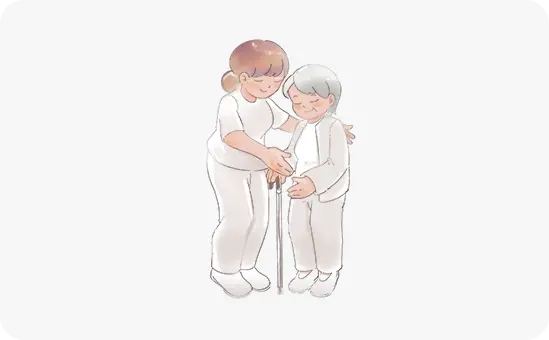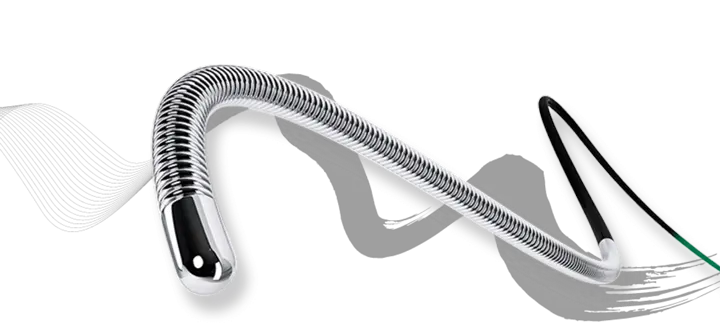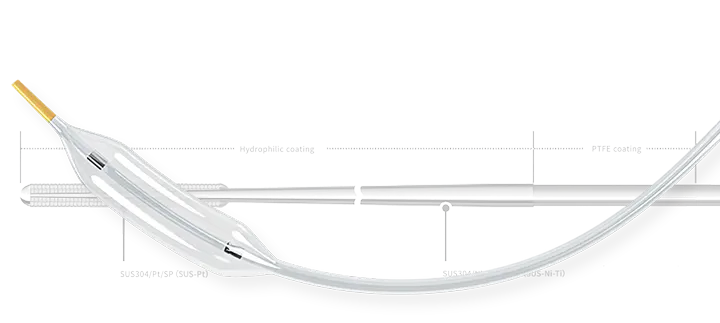Prevention and rehabilitation of stroke
Healthcare
About This Information:
This English version is a translation of content originally created based on medical information used in Japan. Accordingly, the data and treatment approaches presented reflect the situation in Japan and may differ from those in other countries or regions.
Supervised by: Dr. Masataka Takeuchi
Sequelae of stroke
A stroke often causes residual brain damage, leading to various sequelae or aftereffects.
The sequelae vary depending on the brain region that was damaged. They include physical impairments, such as paralysis, and mental impairments, which are less conspicuous.
-
Motor impairment
Typically, one side of the body (including the hand and foot) is paralyzed and cannot be moved. Impairment occurs on the side of the body opposite the damaged side of the brain.
-
Sensory impairment
Abnormal sense of touch and pain sensation. Sensitivity may be decreased or increased.
-
Anarthria and aphasia
Abnormal speech, including slurred speech and the inability to formulate or comprehend language.
-
Visual field deficit
Double vision (diplopia) or loss of vision on one side of the visual field (hemianopia).
-
Dysphagia
Difficulty swallowing.
-
Higher brain dysfunction
Symptoms vary, including memory impairment (inability to remember or learn new information), attention impairment (inability to pay attention or concentrate), and executive dysfunction (inability to organize tasks or perform them efficiently). Patients often have more than one of these symptoms.
Rehabilitation after stroke
Initiating rehabilitation at an early stage is encouraged to alleviate sequelae. Continuing rehabilitation is also important even after being discharged from the hospital where you received treatment.

| Time | Onset: acute phase | 2 weeks: recovery phase | 3–6 months: post-acute care phase |
|---|---|---|---|
| Place | Hospital | Rehabilitation ward/specialized facility | Home |
| Purpose | Preventing decline in function | Recovery of function | Maintenance of function and QOL improvement |
| Content | Sustaining life is the top priority. Treatment is administered to prevent further brain damage. | After the acute phase treatment is completed and the patient’s condition becomes stable, a rehabilitation program is initiated. This program promotes functional recovery and improves the performance of daily activities. | The period when the patient is discharged from the hospital or rehabilitation facility and resumes daily life. The patient is encouraged to return to daily and social life while maintaining the functional capacities restored during the recovery phase. |
Stroke Consultation Services
Many patients who had a stroke live with anxiety over recurrence and sequelae.
Although different medical facilities and teams are involved in a patient’s recovery in the acute, recovery, and post-acute care phases, the patient may be reluctant to ask questions or express their concerns. In such cases, they can rely on the Stroke Consultation Services.
The Stroke Consultation Services were organized at over 200 primary stroke center (PSC) core institutions across Japan, and full-fledged operation began in 2022. The service integrates multiple professions, including doctors, nurses, rehabilitation specialists, medical social workers, and registered dietitians, to support patients and their families, offering comprehensive consultation support.
Main consultation contents

-
Prevention of recurrence and complications, including diet or medication consultations
-
Welfare services, including application for long-term care insurance and home care
-
Physical disability certification system
-
Outpatient and home care rehabilitation and equipment
-
Support for balancing treatment and work
-
Economic, psychological, and social concerns, including payment of medical expenses
A primary stroke center (PSC) plays a central role in acute care in the community, 24 hours a day and 365 days a year.
A primary stroke center (PSC) is an institution that is able to accept patients 24 hours a day and 365 days a year in response to requests from local medical institutions or ambulance crews. A doctor for acute phase care is available to start medical treatment (including intravenous t-PA) as soon as possible after a patient is transferred to the institution. An institution that meets the requirements specified by the Japan Stroke Society is certified as a primary stroke center (PSC).
If an institution meets certain conditions, including the number of specialists and treatment experience, it will be certified as a primary stroke center (PSC) core institution. Establishing Stroke Consultation Services is required for core institutions.
10 tips for preventing and overcoming stroke
A stroke is a preventable condition that can be avoided by treating risk factors, such as high blood pressure, abnormal lipids, and diabetes (so called lifestyle diseases), and managing your lifestyle. It is also important to continue rehabilitation and treatment to prevent recurrence after a stroke has occurred.
10 tips for preventing stroke
-
1. Treat high blood pressure.
-
2. Do not leave diabetes untreated.
-
3. See a doctor immediately if you notice an arrhythmia.
-
4. Quit smoking.
-
5. Excessive drinking is dangerous; drink only in moderation.
-
6. Treat high cholesterol.
-
7. Reduce salt and fat intake.
-
8. Continue exercising at a level that is appropriate for your physical condition.
-
9. Being overweight is a major risk factor for many diseases; maintain a healthy weight.
-
10. See a doctor right away if you experience any stroke symptoms.
10 tips for overcoming stroke
-
1. Lifestyle: Practice selfcare to prevent stroke.
-
2. Learning: Educate yourself to prevent recurrence.
-
3. Medication: Do not stop medications that protect you from having a stroke.
-
4. Family doctor: See your doctor immediately if you are uncertain.
-
5. Pneumonia: Do not underestimate the danger of pneumonia.
-
6. Rehabilitation: Be strict and persistent with your rehabilitation.
-
7. Social participation: Maintain social connections and relationships. Get out of the house.
-
8. Sequelae: Seek support and support others in overcoming sequelae.
-
9. Social welfare system: You are not alone. Make use of the welfare systems available to you.
-
10. Action at recurrence: Did the disease recur? Do not hesitate to call an ambulance right away.
Created by the Japan Stroke Society (external website: Public Interest Incorporated Foundation the Japan Stroke Society jsa-web.org/Japanese)
A word from the supervising doctor
Many strokes are sudden events, and they affect not only patients but also their families and the people around them.
Approximately 50% of individuals who have experienced a stroke can return to live at home, although this depends on age and severity. Stroke is reportedly the most common disease that requires nursing care. Most patients need to be transferred to a convalescent rehabilitation hospital specialized in rehabilitation. Transferring to such a hospital within two weeks of a stroke is recommended for early intervention.
Given such situations, the Stroke Consultation Services are set up at acute-phase hospitals. You are encouraged to use the services without hesitation to resolve your family’s questions and reduce associated burdens, including referral to a rehabilitation hospital, home care, welfare services, and financial aid.
Most patients who experience an ischemic or hemorrhagic stroke often have at least one underlying condition that is untreated or poorly controlled, such as hypertension, diabetes, or hyperlipidemia. A stroke can be prevented by properly managing these underlying diseases. Importantly, relatives of patients who had a subarachnoid hemorrhage are strongly encouraged to visit a doctor because the development of a brain aneurysm, a cause of subarachnoid hemorrhage, is hereditary.
A stroke can easily recur. If it recurs, living at home will become difficult for most patients. For this reason, properly controlling underlying diseases is crucial. Patients also need to perform on-going rehabilitation to prevent muscle weakness with aging.
Lastly, strokes are a familiar and frightening disease, but they are preventable.
Let’s deepen our understanding of stroke and consider what we can do to prevent their occurrence.





